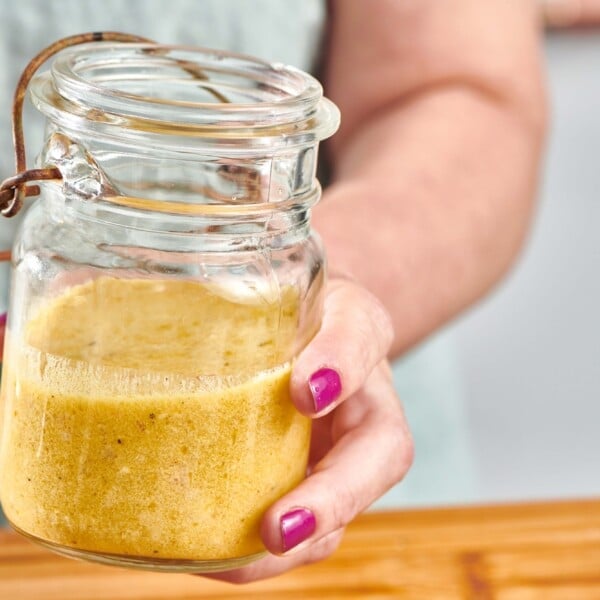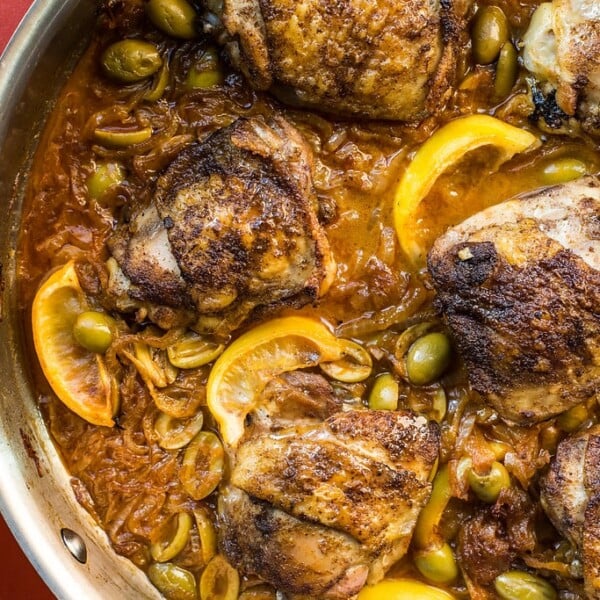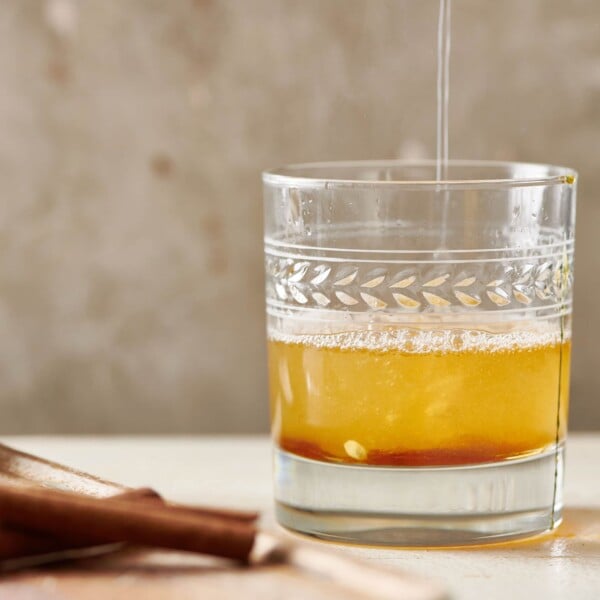Preserved Lemons
on May 19, 2023, Updated Sep 11, 2023
This post may contain affiliate links. Please read our disclosure policy.
Preserved lemons are flavorful, tangy, bright, and add interest to all kinds of dishes, from tagines to stews to salads to sauces.
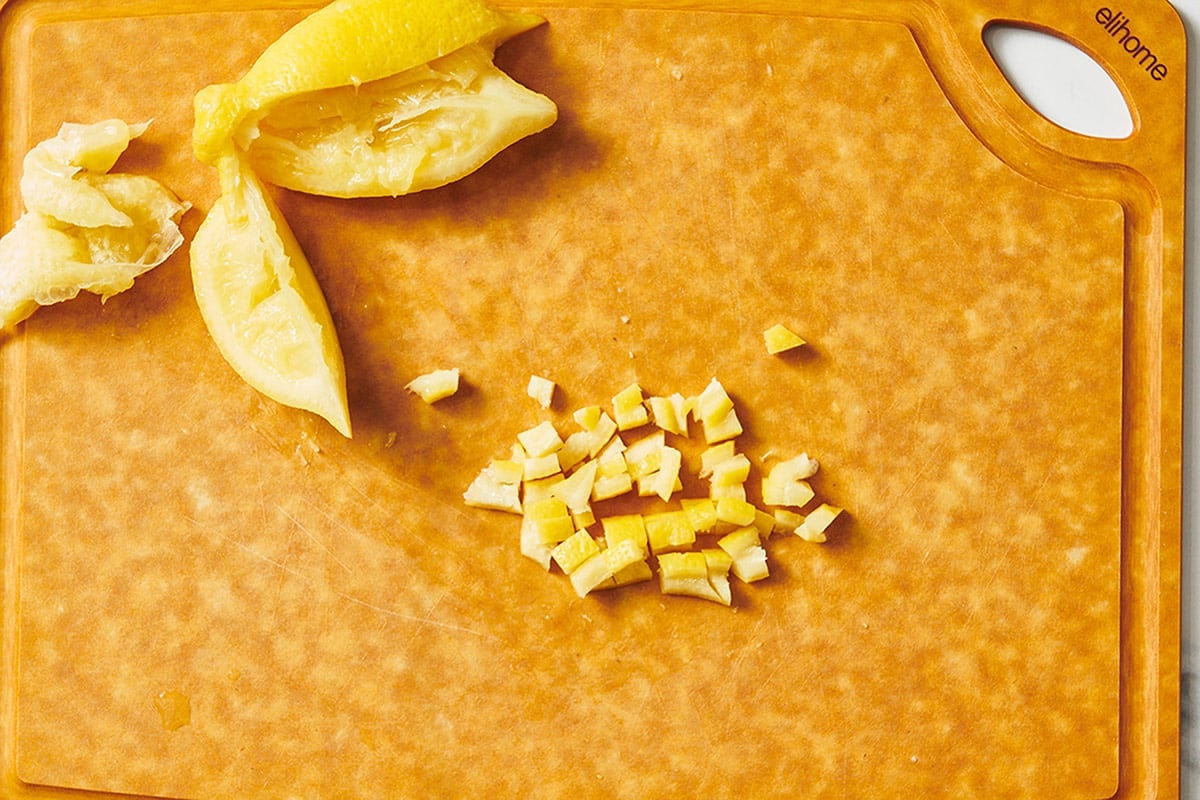
Preserved lemons are a fabulous and singular ingredient used most often in Moroccan, North African, and Middle Eastern cooking. They have a wonderful salty, briny, tangy, citrusy flavor.
Usually, most of us use the juice and/or the zest of the citrus and toss the rinds. With preserved lemons, you use the rind of the lemon, which will have softened and been preserved due to its long soak in a juice and salt brine. They take a while to preserve, it’s true, but once you have them on hand, you’ll be able to add interest to recipes with the addition of this unique, flavorful ingredient.
By signing up, you agree to our Privacy Policy.
What's In This Post?
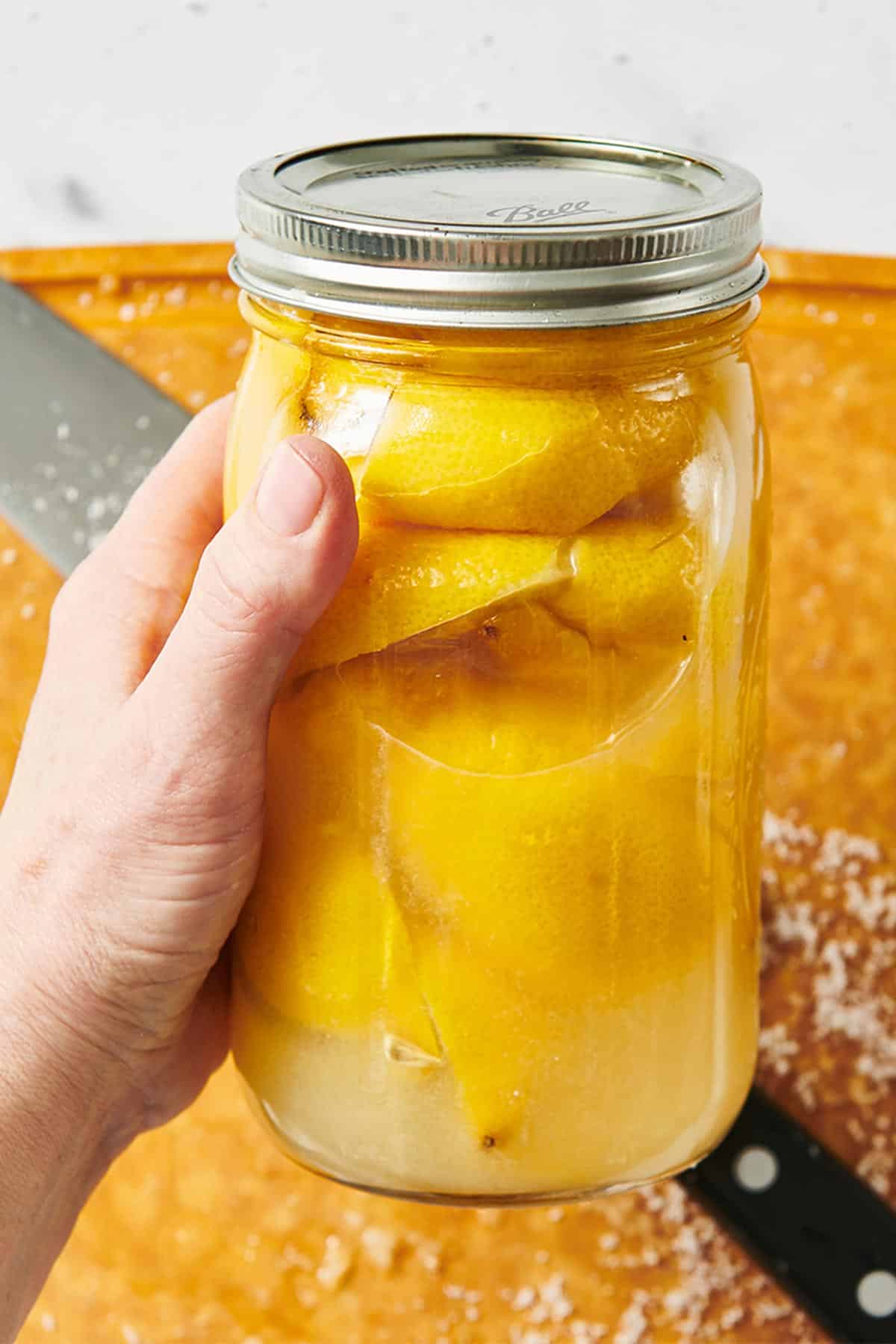
How to Use Preserved Lemons
Most recipes call for the rind of preserved lemons. You need to rinse the lemons well before using them in recipes. The pulp can be used as well as the rind, but do note that the pulp will be quite salty, despite rinsing it in water, so use sparingly and add any other salt very judiciously.
The rinds of preserved lemons can be added to all kinds of dishes for a pop of intense citrus flavor. Dice them and sprinkle them over a salad, or use them in tagines, stews, and bean dishes. I love them with the bitterness of broccoli rabe, the mildness of stewed chayote, or mixed into a seafood or fish ceviche.
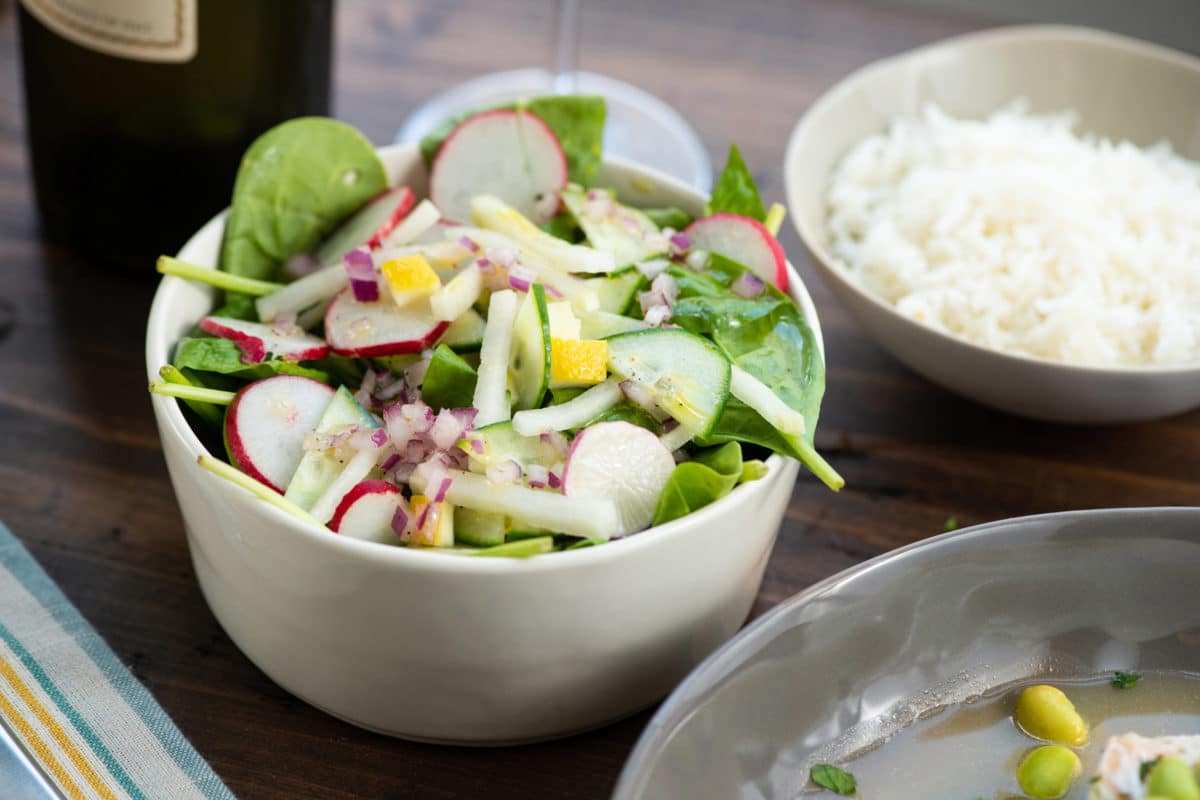
Add some minced rinds to tzatziki, dill sauce, black or green olive tapenade, or tartar sauce. They are a great addition to salads, like chicken salad or salmon salad.
Also, try them in grain salads and hummus. You can also blend the rinds right into dressings and vinaigrettes, or leave them in little chopped pieces. Also, anywhere you might add olives and capers for their briny flavor, you might consider using preserved lemons.
Use a strip to garnish a Lemongrass Cocktail!
Preserved lemons are easy to make, flavorful, tangy, bright, and add interest to all kinds of dishes from tagines to stews to salads to sauces
Ingredients
There are just two ingredients in preserved lemons: lemons and kosher salt! And the other ingredient is time….all of these are non-negotiable!
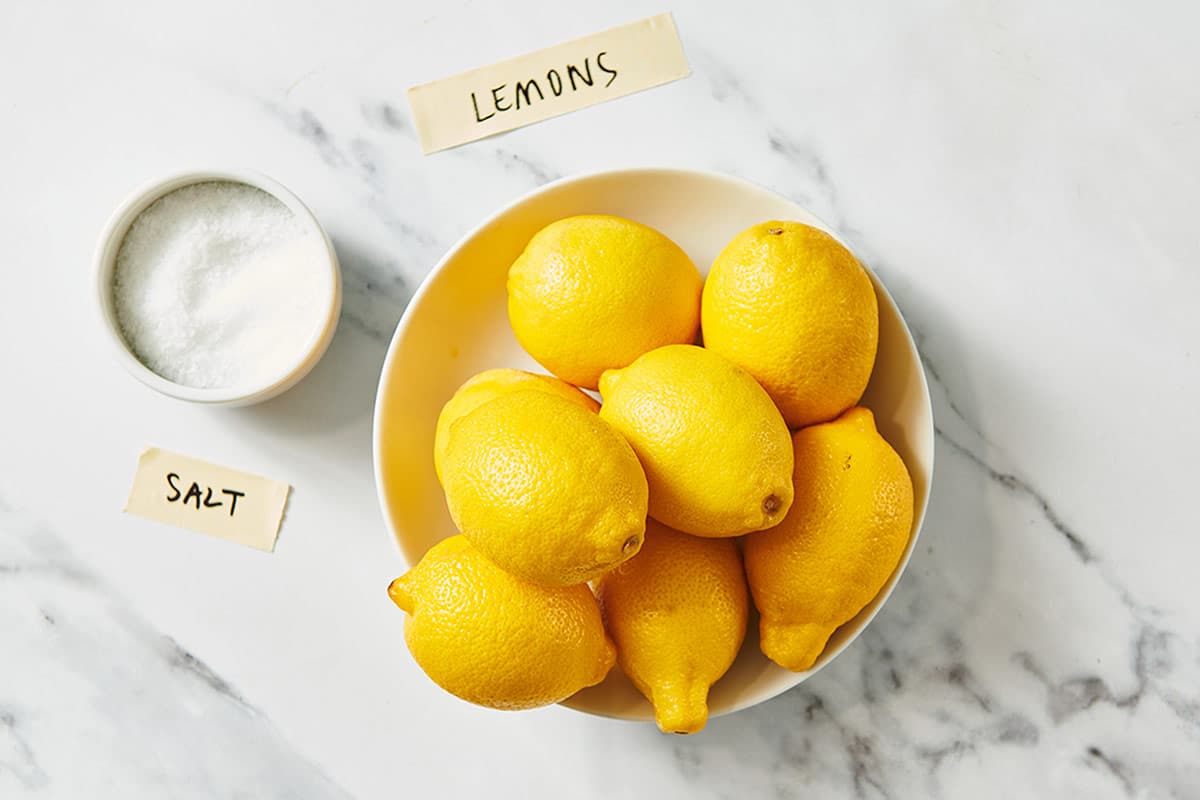
Variations
Some cooks also like to layer in spices to the brining mixture, such as cinnamon sticks, bay leaves, cardamom, cloves, vanilla beans, and peppercorns. Make one batch plain, then see how you want to experiment.
How to Make Preserved Lemons
- Slice the lemons: Cut the lemons lengthwise into quarters, but stop before the quarters are completely separate so the lemon holds together at the bottom.
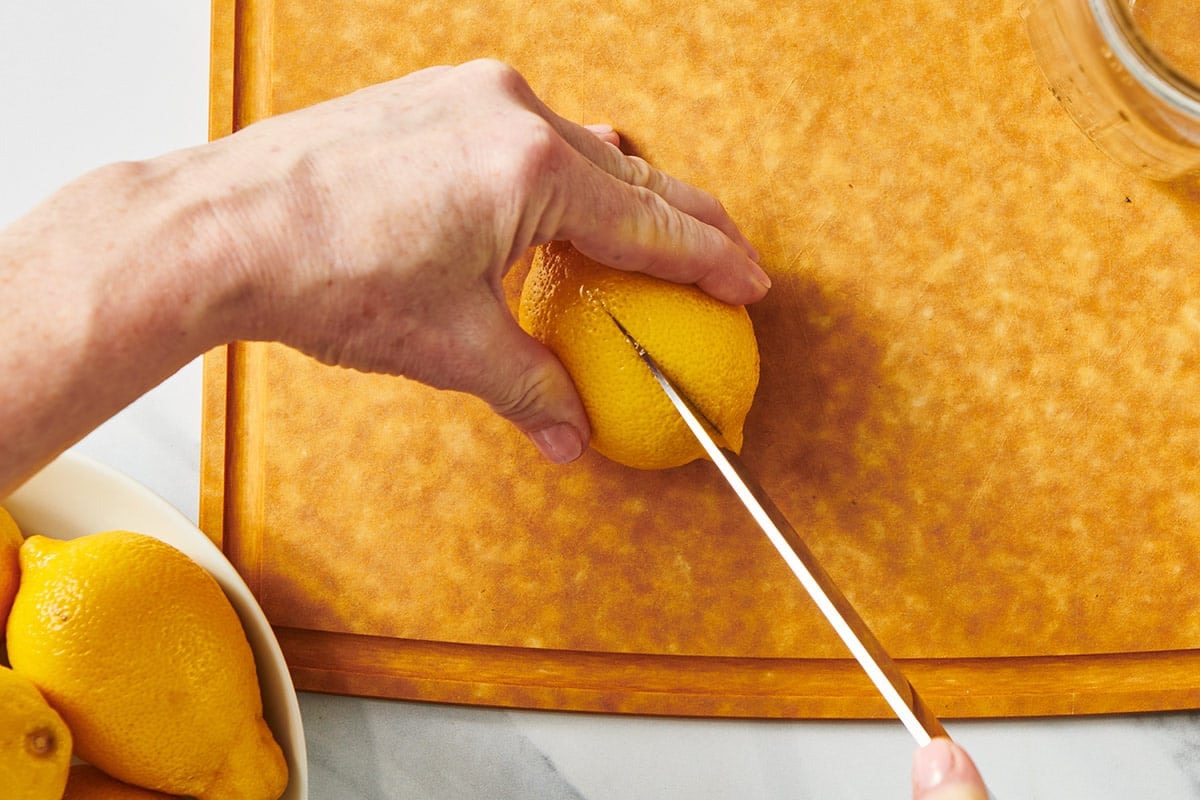
- Salt the lemons: Generously salt the insides of the lemons and then reform them into lemon shape.
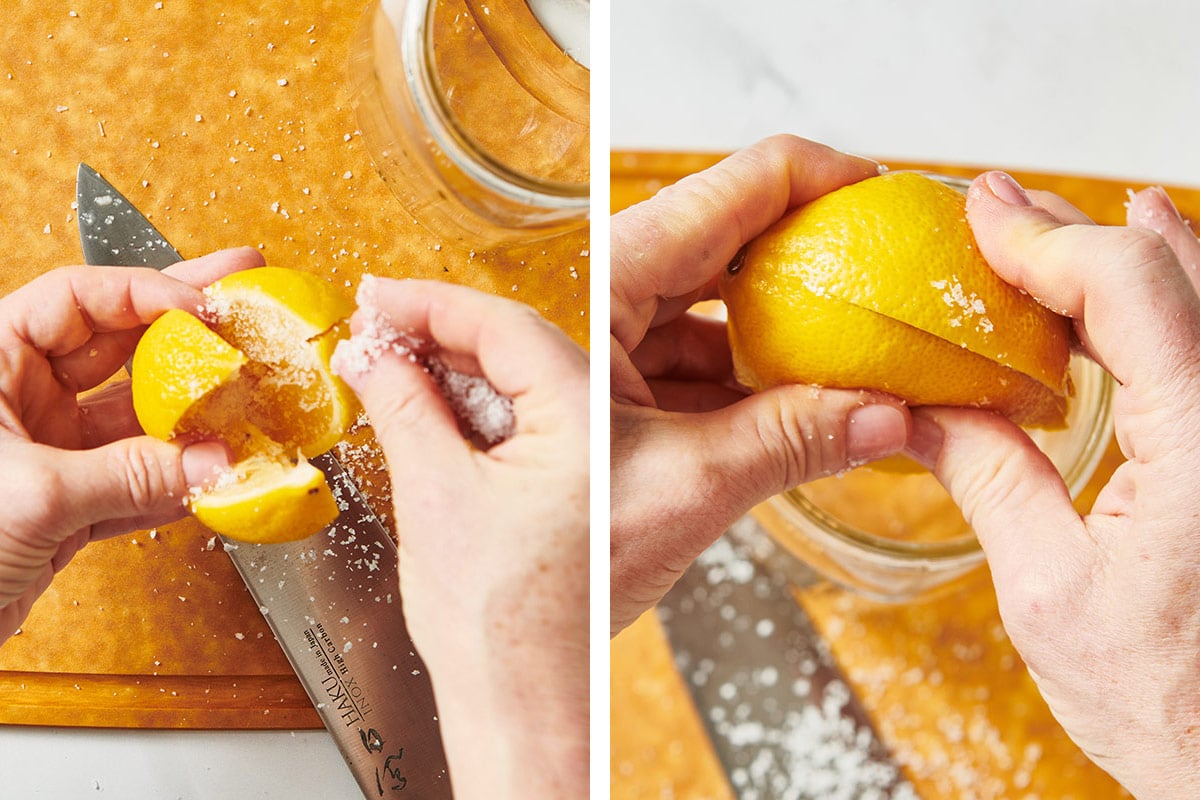
- Pack the jar: Sprinkle some salt in the bottom of the sterilized jar. Add the lemons, giving them a good squeeze as you place them in the jar to release their juice. Pack in the lemons, pressing them down as you go to release more of the juice, and sprinkling salt in between the layers of lemon.
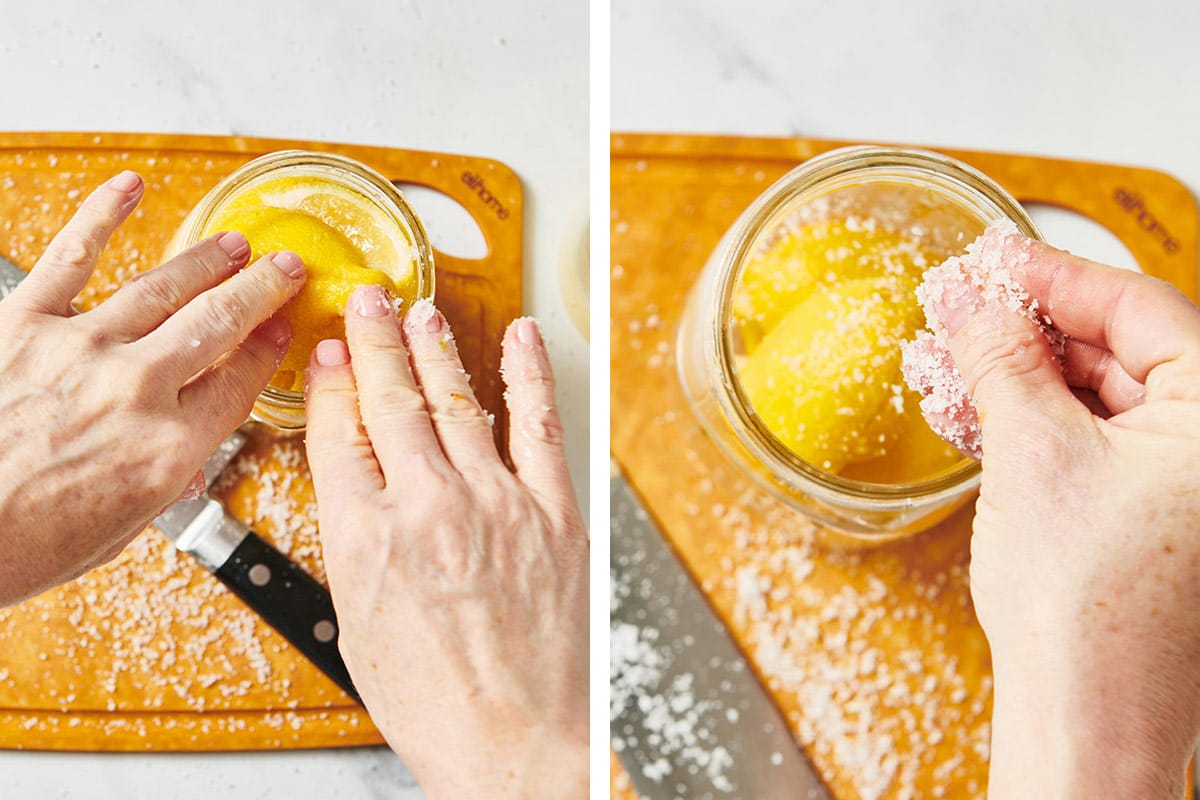
- Add lemon juice: Pour in the remaining 1 cup of lemon juice; there should be enough liquid to completely cover the lemons. Make sure there is a little headroom between the top of the liquid and lemons and the lid of the jar. Seal the jar.
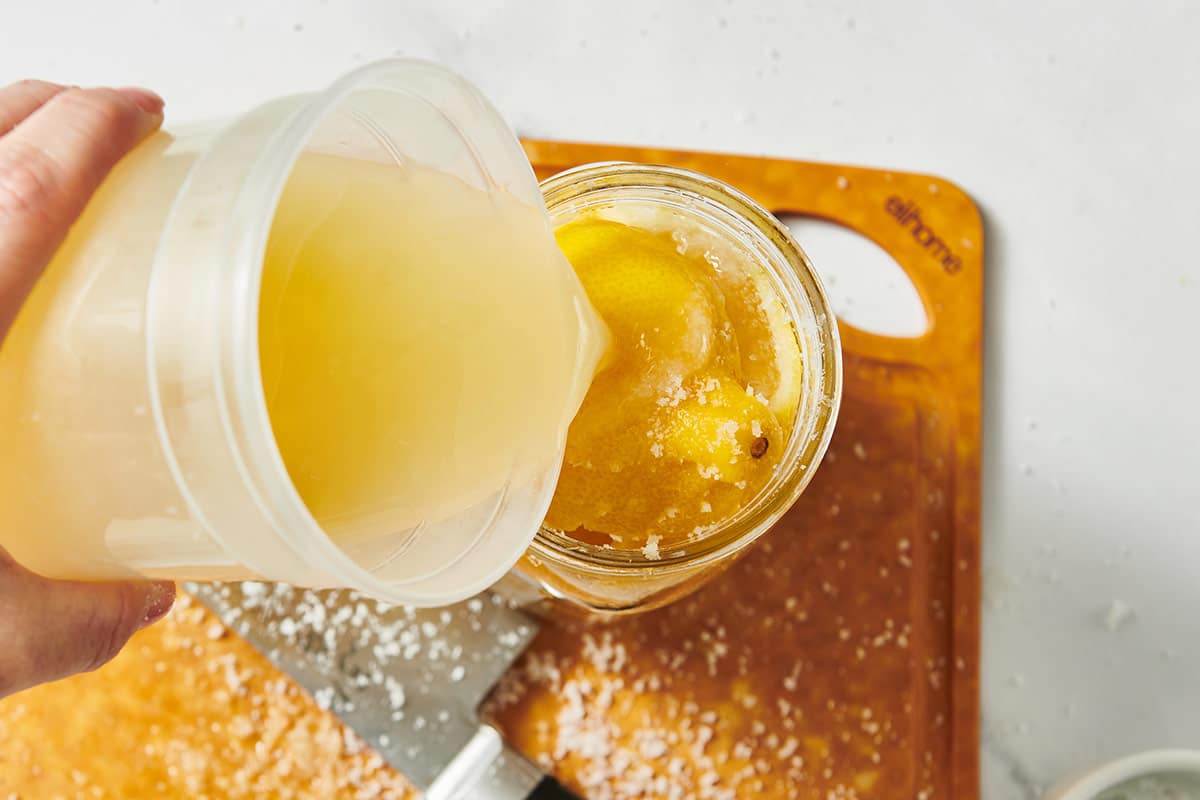
- Wait and shake: Let sit at room temperature for 3 days, and give the jar a shake or two each day to redistribute the salt and liquid around the lemons, or flip the jar over every day. Place the jar in the fridge for at least 3 weeks, and preferably 4 for the best flavor. Give the jar a shake every couple of days as you think of it.
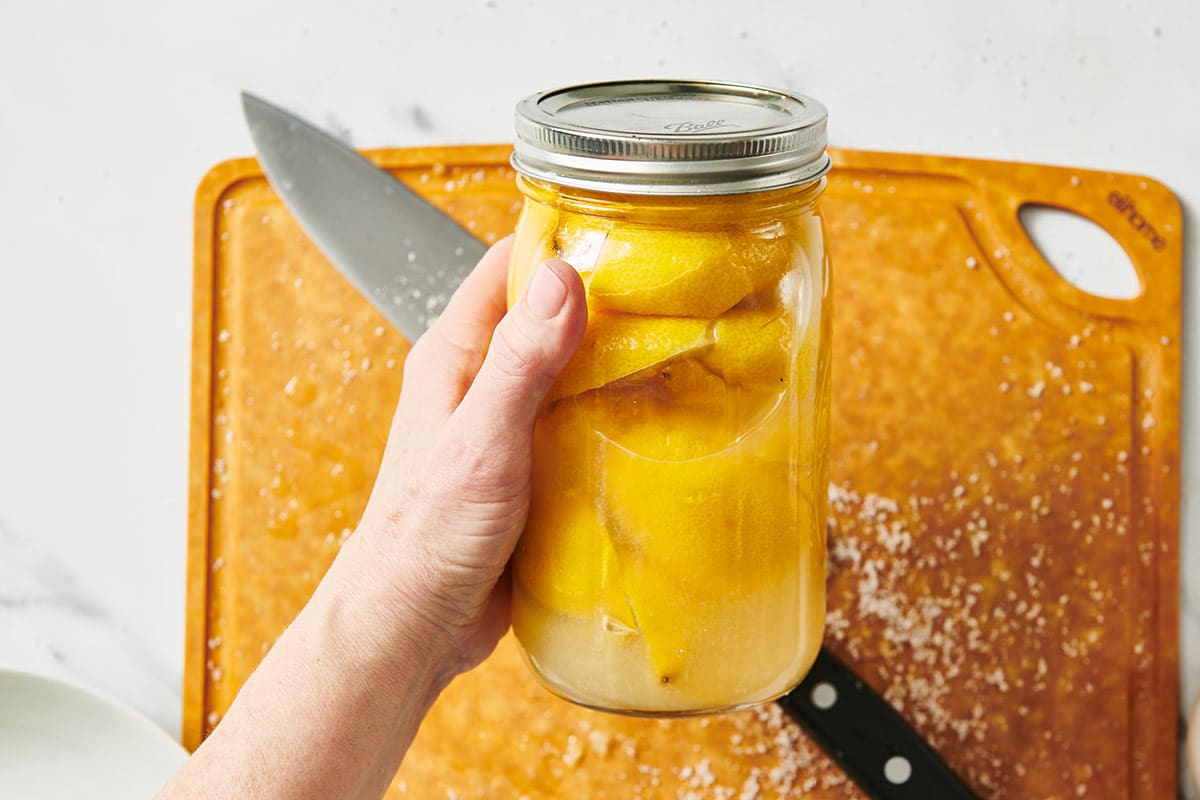
- Slice and use: When you are ready to use the lemons, pull one out of the jar, give it a thorough rinse in cold water, then remove the seeds, and mince or sliver up the rind to use in a recipe. Again, you can also use the flesh if you like, though it will remain a bit salty, despite the rinsing.
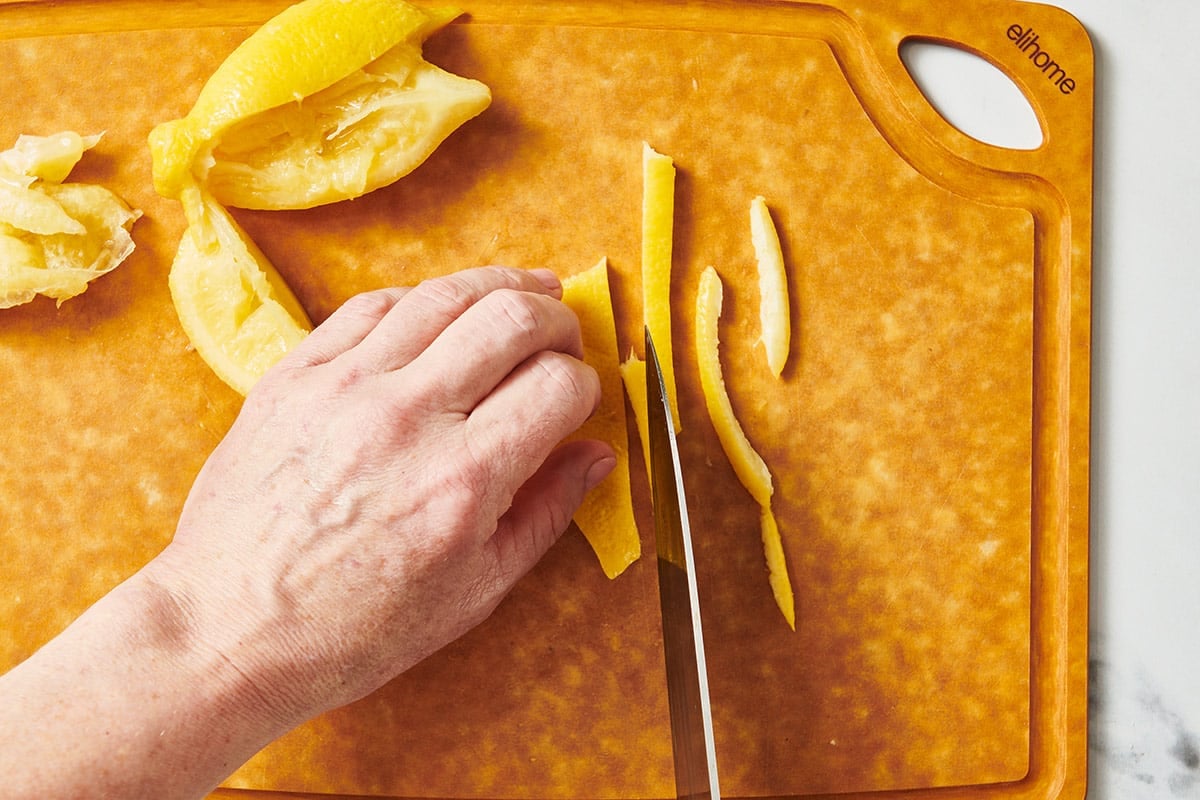
FAQs
The flavor is still that of a lemon, but more muted, and the rind will have softened quite a bit and have a nice gentle chewy texture. Even after rinsing them, they will still be quite salty and pungent.
You have to plan ahead if you want to make preserved lemons since they take about 3 to 4 weeks to ferment. However, the process itself is very simple, and you’ll make a lot, and they last almost indefinitely. You will be able to use them for months in your cooking. True, for those of us fond of immediate gratification, these don’t offer much in that department. But once you have them on hand, you’ll find yourself looking for all kinds of ways to use them.
They last for up to 9 months, so the perseverance and patience will pay off for weeks and weeks. Make sure the lemons are submerged in the liquid as you store them.
Pin this now to find it later
Pin It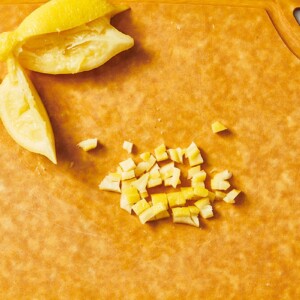
Preserved Lemons
Equipment
- Sterilized jar (just large enough to hold the lemons)
Ingredients
- 20 lemons
- ½ cup kosher salt
- Additional 1 cup or so freshly squeezed lemon juice
Instructions
- Cut the lemons lengthwise into quarters, but stop before the quarters are completely separate so the lemon holds together at the bottom. Generously salt the insides of the lemons and then reform them into lemon shape. Sprinkle some salt in the bottom of the sterilized jar. Add the lemons, giving them a good squeeze as you place them in the jar to release their juice. Pack in the lemons, pressing them down as you go to release more of the juice, and sprinkling salt in between the layers of lemon. Pour in the remaining 1 cup of lemon juice; there should be enough liquid to completely cover the lemons. Make sure there is a little headroom between the top of the liquid and lemons and the lid of the jar. Seal the jar.
- Let sit at room temperature for 3 days, and give the jar a shake or two each day to redistribute the salt and liquid around the lemons, or flip the jar over every day. Place the jar in the fridge for at least 3 weeks, and preferably 4 for the best flavor. Give the jar a shake every couple of days as you think of it.
- When you are ready to use the lemons, pull one out of the jar, give it a thorough rinse in cold water, then remove the seeds and mince or sliver up the rind to use in a recipe. Again, you can also use the flesh if you like, though it will remain a bit salty, despite the rinsing.

